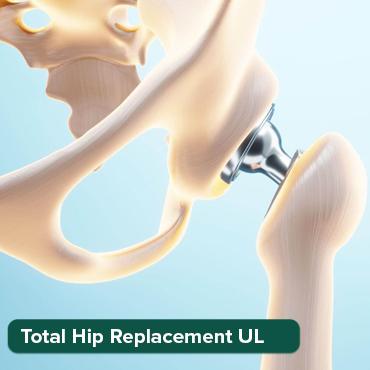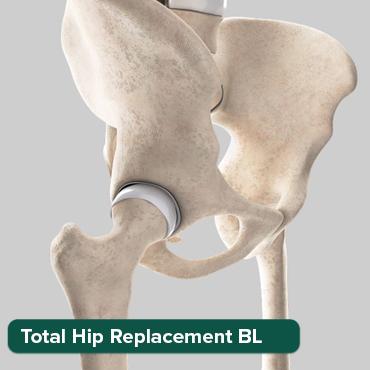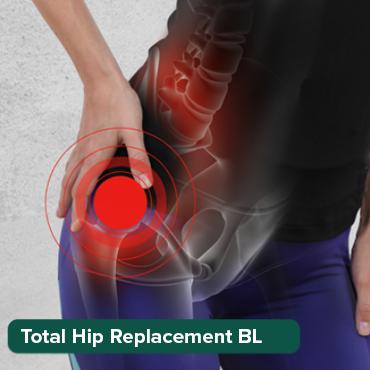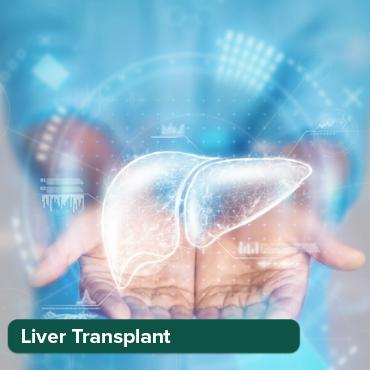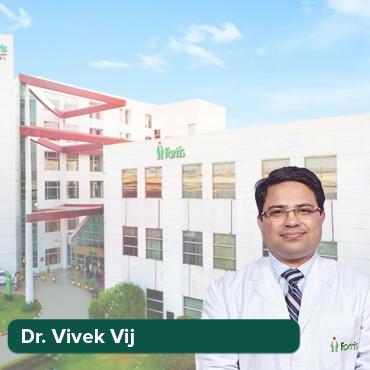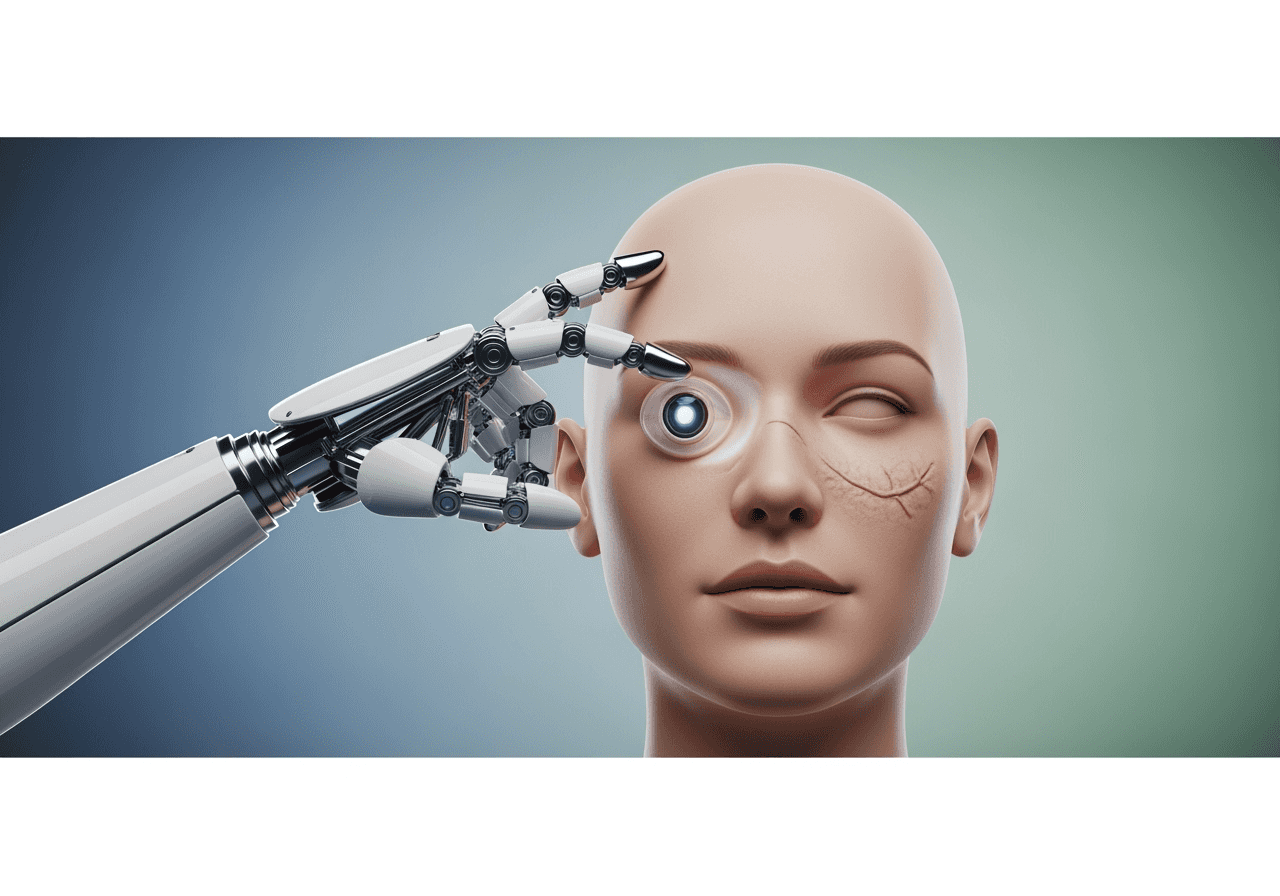
Advanced Robotic Technology Used in Plastic Surgery
31 Oct, 2025
 Healthtrip
Healthtrip- Where is Robotic Plastic Surgery Being Performed?
- Why Use Robots in Plastic Surgery? The Benefits of Robotic Assistance < li>Who are the Pioneers in Robotic Plastic Surgery?
- How Does Robotic Technology Work in Plastic Surgery?
- Examples of Robotic Plastic Surgery Procedures
- The Future of Robotics in Plastic Surgery
- Conclusion
The Rise of Robotics in Plastic Surgery
The incorporation of robotic technology into plastic surgery marks a significant leap forward, transitioning from conventional methods to a more refined and precise approach. These sophisticated systems offer surgeons enhanced visualization, greater dexterity, and improved control during complex procedures. Unlike traditional surgery, where the surgeon's movements are limited by the tools and the physical constraints of the human hand, robotic systems provide the ability to perform intricate maneuvers with remarkable accuracy. This translates to smaller incisions, reduced tissue damage, and ultimately, a more natural-looking result for the patient. While the technology is still evolving, early adoption has shown promise in areas like breast reconstruction, facial rejuvenation, and microsurgical procedures. As Healthtrip continues to connect patients with leading medical centers and surgeons, such as those at Memorial Sisli Hospital and Yanhee International Hospital, exploring the potential of robotics becomes a crucial part of informed decision-making for anyone considering plastic surgery.
Most popular procedures in India
Benefits of Robotic Plastic Surgery
Robotic plastic surgery offers a multitude of benefits that extend to both the surgeon and the patient, transforming the entire surgical experience. For surgeons, it provides an ergonomic advantage, reducing fatigue and improving precision during long and complex procedures. This increased control translates to more consistent and predictable results. For patients, the benefits are even more profound. Smaller incisions mean less scarring, reduced pain, and a quicker recovery time. Moreover, the enhanced precision of robotic surgery can lead to more natural-looking outcomes, minimizing the risk of complications and revision surgeries. For example, procedures performed with robotic assistance at hospitals like Saudi German Hospital Cairo and Vejthani Hospital can result in a smoother recovery and a more aesthetically pleasing result. Whether it’s a breast augmentation, a facelift, or reconstructive surgery, robotic-assisted approaches offer a compelling alternative to traditional methods. Healthtrip aims to provide accessible information about these cutting-edge techniques, ensuring patients are well-informed and confident in their healthcare choices.
Specific Robotic Procedures in Plastic Surgery
While robotic surgery is still gaining traction in the field of plastic surgery, several procedures are already benefiting from this innovative technology. Breast reconstruction, particularly using the patient's own tissue (autologous reconstruction), is one area where robotics is making a significant impact. Surgeons can use robotic assistance to harvest tissue from other parts of the body, such as the abdomen or back, with greater precision and less damage to surrounding tissues. Facial rejuvenation procedures, like facelifts and neck lifts, are also being enhanced with robotics, allowing for more delicate and accurate manipulation of facial tissues. In addition, microsurgical procedures, such as lymphaticovenular anastomosis (LVA) for lymphedema, benefit from the enhanced dexterity and visualization offered by robotic systems. Facilities like Fortis Hospital, Noida and Memorial Bahçelievler Hospital are exploring these techniques. As robotic technology continues to evolve, we can expect to see it applied to an even wider range of plastic surgery procedures, further improving outcomes and patient satisfaction. Healthtrip is committed to staying at the forefront of these advancements, providing patients with access to the latest information and connecting them with experienced surgeons skilled in robotic techniques.
Wellness Treatments
Give yourself the time to relax
Lowest Prices Guaranteed!

Lowest Prices Guaranteed!
Cost and Accessibility of Robotic Plastic Surgery
One of the key considerations when exploring robotic plastic surgery is the cost and accessibility of these advanced procedures. Robotic surgery often involves higher initial investments for hospitals and surgical centers, which can translate to higher costs for patients. However, it's important to consider the potential long-term benefits, such as reduced recovery time, fewer complications, and potentially lower revision rates, which can offset the initial expense. Availability can also be a factor, as not all hospitals or clinics offer robotic plastic surgery. Major medical centers and hospitals with advanced technology infrastructure, such as NMC Specialty Hospital, Al Nahda, Dubai and Quironsalud Hospital Murcia, are more likely to have robotic systems and surgeons trained in their use. Healthtrip plays a crucial role in connecting patients with these specialized facilities, providing transparent information about costs and helping individuals navigate the options available to them. As technology advances and robotic systems become more widespread, we can expect to see greater accessibility and potentially lower costs, making these innovative procedures available to a wider range of patients.
Future Trends in Robotic Plastic Surgery
The field of robotic plastic surgery is poised for continued growth and innovation, with exciting developments on the horizon. As technology evolves, we can expect to see even more sophisticated robotic systems with enhanced capabilities, such as improved haptic feedback (sense of touch) and greater integration of artificial intelligence. These advancements will allow surgeons to perform increasingly complex procedures with greater precision, safety, and efficiency. Tele-surgery, where surgeons can operate remotely using robotic systems, is another exciting possibility, potentially expanding access to specialized surgical expertise in underserved areas. Moreover, personalized surgical planning using 3D modeling and virtual reality is likely to become more prevalent, allowing surgeons to tailor procedures to each patient's unique anatomy and desired outcomes, perhaps at facilities like Bangkok Hospital or Taoufik Clinic, Tunisia. Healthtrip is dedicated to monitoring these emerging trends, providing patients with the most up-to-date information and connecting them with the medical professionals who are leading the way in robotic plastic surgery. Get ready to witness a future where cosmetic and reconstructive procedures are safer, more precise, and more accessible than ever before.
Where is Robotic Plastic Surgery Being Performed?
The landscape of robotic plastic surgery is evolving, with several pioneering institutions around the globe embracing this cutting-edge technology. While it's not yet as widespread as traditional surgical methods, specific hospitals and medical centers are leading the charge in integrating robotic assistance into their plastic surgery programs. These centers are often located in countries with advanced healthcare infrastructure and a strong commitment to technological innovation. For those seeking these advanced procedures, Healthtrip can help navigate the options and connect you with leading facilities. Saudi German Hospital Cairo, Egypt is one such hospital committed to technological innovation.
The adoption of robotic surgery requires significant investment in equipment, training, and infrastructure, which limits its availability to select hospitals. However, the benefits it offers in terms of precision and recovery are driving its gradual expansion. In Europe, centers in Germany and Spain are beginning to explore the possibilities. In Asia, hospitals in South Korea and Singapore are at the forefront, including Singapore General Hospital and National Cancer Centre Singapore, known for their innovative surgical programs. These institutions are actively researching and implementing robotic techniques in various plastic surgery applications. Furthermore, Healthtrip can assist in finding accommodations and support services during your treatment abroad. It is also important to note that while Healthtrip can help connect you to these hospitals, it is crucial to verify directly with the hospital if robotic plastic surgery is currently being performed.
In the United States, a number of academic medical centers and private hospitals are offering robotic plastic surgery procedures. These institutions often have dedicated robotic surgery departments and are involved in clinical trials to further refine the techniques. While the specific hospitals offering these procedures may vary depending on the region and the evolving nature of the field, patients seeking robotic plastic surgery should research hospitals with established robotic surgery programs and experienced surgeons. Healthtrip provides resources to help patients find and compare hospitals that may offer this specialized service, ensuring you can make an informed decision about your care. For example, our platform allows you to compare services, read reviews, and connect with patient coordinators who can answer your questions about robotic surgery options.
Why Use Robots in Plastic Surgery? The Benefits of Robotic Assistance
Robotic assistance in plastic surgery offers a multitude of compelling advantages over traditional techniques, promising enhanced precision, improved outcomes, and a more comfortable experience for both the surgeon and the patient. The core benefit lies in the robot's ability to translate a surgeon's hand movements into incredibly precise micro-movements within the surgical site. This is particularly crucial in intricate procedures where accuracy down to the millimeter is paramount. Think of it as a surgeon with bionic hands, capable of executing the most delicate maneuvers with unwavering steadiness. With Healthtrip, accessing such precision and quality becomes easier, ensuring that patients can benefit from the best possible care.
Another significant advantage is enhanced visualization. Robotic systems often incorporate high-definition, three-dimensional imaging, providing the surgeon with a magnified and crystal-clear view of the operating field. This superior visualization allows for better identification of critical structures, such as nerves and blood vessels, minimizing the risk of damage and complications. It’s like having a personal guide inside the body, illuminating the path for the surgeon and ensuring maximum safety. Moreover, the increased precision often translates to smaller incisions, leading to less scarring, reduced pain, and faster recovery times – all benefits that patients appreciate. This is where Healthtrip steps in, making the entire process smoother and more manageable, from pre-operative consultations to post-operative care. We understand that undergoing any surgical procedure can be daunting, and our goal is to ease your journey by offering comprehensive support.
Beyond the technical advantages, robotic surgery can also improve the surgeon's comfort and ergonomics. Traditional surgery often requires surgeons to maintain awkward and physically demanding positions for extended periods, leading to fatigue and potential musculoskeletal problems. Robotic systems allow the surgeon to sit comfortably at a console, controlling the robotic arms with minimal physical strain. This can lead to improved focus, reduced errors, and a more sustainable surgical practice. Ultimately, the benefits of robotic assistance translate to a better experience for both the surgeon and the patient, with the potential for superior outcomes and a quicker return to normal life. And with Healthtrip, you’re not just booking a surgery; you're embarking on a supported journey towards improved health and well-being.
Who are the Pioneers in Robotic Plastic Surgery?
The field of robotic plastic surgery is still relatively young, but it's being propelled forward by a dedicated cohort of innovative surgeons, engineers, and researchers. These pioneers are at the forefront of developing new robotic techniques, exploring novel applications, and pushing the boundaries of what's possible in plastic and reconstructive surgery. Identifying specific individuals who are universally recognized as the *only* pioneers is challenging, as contributions come from various sources. However, several key figures and institutions have played a significant role in shaping the field. It's an exciting time, as these advancements are gradually becoming more accessible, and Healthtrip is committed to keeping you informed about the latest breakthroughs and the experts behind them.
Many of the early adopters of robotic surgery in plastic surgery came from other surgical specialties, such as urology and gynecology, where robotic techniques were more established. These surgeons recognized the potential of robotics to enhance precision and visualization in plastic surgery and began adapting existing robotic platforms to address specific challenges in their field. These pioneers often faced skepticism and resistance from the broader medical community, but their persistence and commitment to innovation helped pave the way for wider acceptance. In fact, Healthtrip aims to highlight these trailblazers and connect patients with the most experienced and skilled professionals in the field. We believe that access to the best expertise is crucial for achieving optimal outcomes.
Academic medical centers and research institutions have also played a vital role in the development of robotic plastic surgery. These institutions provide the resources and infrastructure necessary to conduct clinical trials, develop new surgical techniques, and train the next generation of robotic surgeons. Researchers at these institutions are constantly exploring new ways to improve robotic technology and expand its applications in plastic surgery. It’s a collaborative effort, with surgeons, engineers, and scientists working together to push the boundaries of what's possible. The dedication of these pioneers is truly inspiring, and their work is transforming the landscape of plastic surgery. Healthtrip is here to guide you through this ever-evolving field, providing you with the information and support you need to make informed decisions about your healthcare journey.
Also Read:
How Does Robotic Technology Work in Plastic Surgery?
Robotic technology in plastic surgery represents a fascinating convergence of surgical skill and technological innovation. At its core, robotic surgery employs a sophisticated system consisting of a surgeon's console and a robotic arm unit. The surgeon, seated at the console, views high-definition, three-dimensional images of the surgical site, providing unparalleled visual clarity and depth perception far exceeding traditional surgical techniques. This enhanced visualization is a game-changer, allowing surgeons to identify delicate structures, such as nerves and blood vessels, with greater precision. The da Vinci Surgical System, for instance, is a prominent example, utilizing miniaturized instruments attached to robotic arms that mimic the surgeon's hand movements with incredible accuracy. These instruments can rotate and maneuver in ways that a human hand simply cannot, offering a greater range of motion and dexterity within the confined spaces of the body. The system translates the surgeon's hand movements into precise, real-time movements of the robotic arms, ensuring that every incision, suture, and manipulation is executed with controlled precision.
The technology also incorporates advanced software and algorithms that filter out tremors and enhance the surgeon's control. This is particularly advantageous in delicate procedures where even the slightest involuntary movement could have significant consequences. The surgeon remains in complete command throughout the operation, guiding the robotic arms with their expertise while the robot enhances their capabilities. The system does not perform any actions independently; it is entirely dependent on the surgeon's commands. This synergy between human skill and robotic precision allows for minimally invasive approaches, resulting in smaller incisions, reduced trauma to surrounding tissues, and faster recovery times for patients. Ongoing advancements in robotics and artificial intelligence are further refining these systems, promising even greater precision, efficiency, and safety in plastic surgery. Healthtrip is committed to connecting you with the best medical facilities offering such advanced technologies, ensuring you receive cutting-edge treatment tailored to your specific needs.
Also Read:
Examples of Robotic Plastic Surgery Procedures
The application of robotic technology in plastic surgery is expanding, finding its niche in procedures demanding exceptional precision and minimally invasive techniques. One notable example is robotic-assisted breast reconstruction, where surgeons use robots to meticulously dissect tissues and create pockets for breast implants or to perform complex microsurgical procedures like DIEP flap reconstruction (using tissue from the abdomen to create a new breast). The enhanced visualization and dexterity afforded by the robot allow for more precise tissue handling, potentially leading to better cosmetic outcomes and reduced complications. Facial reconstruction is another area where robotic surgery demonstrates promising results. Reconstructing complex facial defects resulting from trauma or cancer removal often requires intricate grafting and precise alignment of tissues. Robots enable surgeons to perform these delicate procedures with greater accuracy, minimizing scarring and improving facial symmetry. For instance, the Memorial Sisli Hospital, and the Memorial Bahçelievler Hospital in Turkey, are equipped with state-of-the-art facilities and experienced surgeons who are pioneering robotic techniques in various plastic surgery procedures.
Robotic assistance is also being explored for procedures like lymphaticovenular anastomosis (LVA), a supermicrosurgical technique used to treat lymphedema, a condition characterized by swelling due to lymphatic system dysfunction. The robot's precision allows surgeons to connect tiny lymphatic vessels to veins, restoring lymphatic flow and reducing swelling. Furthermore, robotic technology is showing promise in reconstructive surgeries for congenital deformities, such as cleft lip and palate, where precise tissue manipulation is crucial for achieving optimal functional and aesthetic results. As the technology continues to evolve, we can expect to see even wider applications in various areas of plastic surgery. Healthtrip can help you find specialized centers offering robotic plastic surgery, ensuring you receive the most advanced and effective treatments available. Whether it's reconstructive surgery after an accident or cosmetic enhancements for a confident new you, Healthtrip connects you to a world of possibilities with hospitals like Memorial Sisli Hospital (https://www.healthtrip.com/hospital/memorial-sisli-hospital) and Memorial Bahçelievler Hospital (https://www.healthtrip.com/hospital/memorial-bahcelievler-hospital) leading the way.
Also Read:
The Future of Robotics in Plastic Surgery
The future of robotics in plastic surgery is bright, promising further advancements that could revolutionize the field. Artificial intelligence (AI) is poised to play a significant role, with AI-powered systems potentially assisting surgeons in preoperative planning, surgical navigation, and even intraoperative decision-making. Imagine AI algorithms analyzing patient-specific anatomy and suggesting optimal incision locations or predicting the outcomes of different surgical techniques. Such tools could help surgeons personalize treatments and achieve more predictable results. Another exciting area of development is the integration of augmented reality (AR) into robotic surgery. AR could overlay virtual images onto the surgeon's view of the surgical field, providing real-time information about underlying structures, such as nerves and blood vessels. This could enhance surgical precision and reduce the risk of complications. Researchers are also exploring the use of haptic feedback in robotic systems, allowing surgeons to "feel" the tissues they are manipulating. This would provide a more intuitive and natural surgical experience, improving control and dexterity.
The development of smaller, more versatile robotic platforms is also on the horizon. These miniaturized robots could access even tighter spaces in the body, expanding the range of procedures that can be performed minimally invasively. Additionally, the use of robotics in reconstructive microsurgery is likely to increase. As robotic systems become more sophisticated, they could automate some of the more tedious and complex aspects of microsurgical procedures, such as suturing tiny blood vessels. This could significantly reduce operating times and improve outcomes for patients undergoing complex reconstructive procedures. Ultimately, the goal is to create robotic systems that are more intuitive, adaptable, and capable of performing a wider range of surgical tasks. As technology advances, Healthtrip will continue to be at the forefront, connecting patients with the best medical facilities and surgeons utilizing the latest robotic innovations, ensuring access to cutting-edge treatments that improve outcomes and enhance quality of life. Facilities like Fortis Hospital, Noida (https://www.healthtrip.com/hospital/fortis-hospital-noida) and Max Healthcare Saket (https://www.healthtrip.com/hospital/max-healthcare-saket) are prime examples of hospitals adopting futuristic technologies.
Also Read:
Conclusion
Robotic plastic surgery represents a significant leap forward in surgical technology, offering the potential for enhanced precision, minimally invasive approaches, and improved patient outcomes. While still in its early stages of adoption, the field is rapidly evolving, with ongoing research and development paving the way for even more sophisticated and versatile robotic systems. The benefits of robotic surgery, such as enhanced visualization, greater dexterity, and reduced trauma, are particularly appealing in plastic surgery, where meticulous tissue handling and precise reconstruction are paramount. As the technology becomes more accessible and surgeons gain more experience, we can expect to see a wider range of plastic surgery procedures performed with robotic assistance. From breast reconstruction to facial reconstruction and beyond, robotics holds the promise of transforming the way plastic surgeons approach complex surgical challenges.
However, it's crucial to remember that robotic surgery is not a replacement for skilled surgeons. Rather, it's a tool that enhances their capabilities, allowing them to perform procedures with greater precision and control. The success of robotic surgery ultimately depends on the surgeon's expertise, training, and judgment. Healthtrip is dedicated to providing patients with access to the best medical care, connecting them with experienced surgeons and state-of-the-art facilities offering robotic plastic surgery. Whether you're seeking reconstructive surgery after an injury or cosmetic enhancements to boost your confidence, Healthtrip can help you navigate the world of medical tourism and find the right treatment option for your needs. Explore hospitals like Saudi German Hospital Cairo, Egypt (https://www.healthtrip.com/hospital/saudi-german-hospital-cairo) for options on plastic surgeries that can be availed with state of the art technology in the field of medical science.
Related Blogs

Long-Term Follow-Up After Eye Surgery
Detailed insights into eye surgery – doctors, hospitals, technology, recovery,

Healthtrip’s Transparency in Eye Surgery Pricing and Packages
Detailed insights into eye surgery – doctors, hospitals, technology, recovery,

Frequently Asked Questions About Eye Surgery
Detailed insights into eye surgery – doctors, hospitals, technology, recovery,

Advanced Robotic Technology Used in Eye Surgery
Detailed insights into eye surgery – doctors, hospitals, technology, recovery,

How Healthtrip Supports Foreign Patients for Eye Surgery in India
Detailed insights into eye surgery – doctors, hospitals, technology, recovery,

Top Medical Packages for Eye Surgery Offered by Healthtrip
Detailed insights into eye surgery – doctors, hospitals, technology, recovery,
